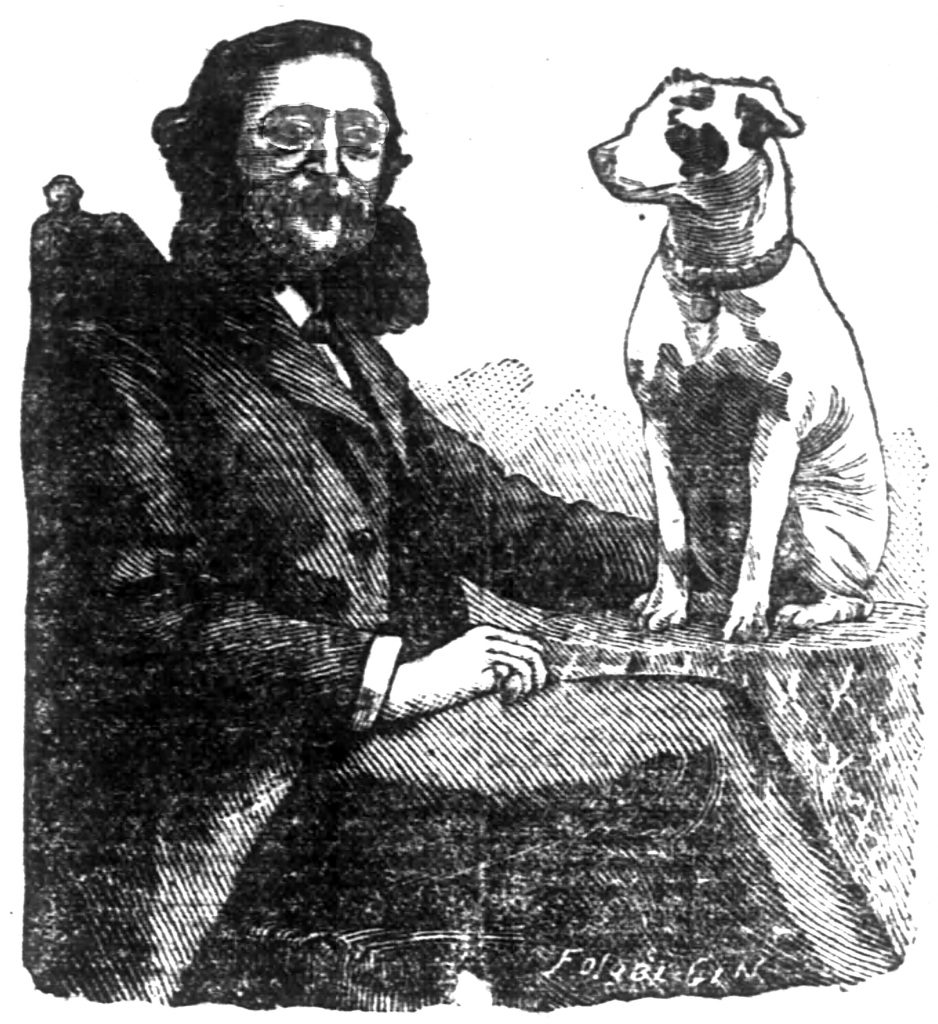Henry Clay “Hal” Young should have remained a bachelor. He was quite good at it. His marriages, on the other hand, led to divorces that were, according to a New York newspaper, “very unsavory in flavor, but nauseating as well,” and overflowed with infidelity, spiritualist séances, voodoo, horsewhipping, prostitution, and all manner of chicanery.

Image extracted from microfilm by Greg Hand
Hal Young was born in 1838 at the family estate on Warsaw Avenue in Price Hill. His father was among the earliest bankers in Cincinnati, founding what later became the Merchants’ National Bank. Hal worked as a bookkeeper until the outbreak of the Civil War, when he found his calling as a soldier. As a captain in the 137th Ohio Volunteer Infantry assigned to the defense of Fort McHenry outside Baltimore, Hal became infatuated with the uniforms, music, and drills of army life.
When the war ended, he resumed his life as a prosperous businessman in his father’s companies, but devoted all his free time to a company of the Ohio National Guard that adopted the name “Lytle Greys” after General William H. Lytle, who died at the Battle of Chickamauga. Cincinnati loved the Lytle Greys; their marches and drills attracted large audiences, and their captains were celebrities. According to The Cincinnati Enquirer [August 10, 1924]:
“One of the first of these was Hal C. Young, a splendid captain and disciplinarian, but always a favorite in their social life. Always debonair and soldierly, he was an ideal leader for a company.”
Contributing to Hal’s “debonair and soldierly” bearing was his facial trademark, a magnificent pair of dundrearies—overgrown sideburns that hung down to his shoulders. The Lytle Greys often took their show on the road, and it was on one such trip that Hal met and courted an Illinois lass named Helen Edgerton. They married in 1875.
Hal was promoted through the ranks and eventually became a General in the Ohio National Guard and good friends with Ohio Governor Thomas L. Young (no relation), who appointed him honorary commissioner to the 1878 Paris World’s Fair. Hal fell in love with Paris and only reluctantly returned stateside. Soon after arriving back in Cincinnati, Hal abandoned his wife and took up with Henrietta Griswold, the wife of a Cincinnati newspaper editor.
Helen sued for alimony and, when that proved unsuccessful, for divorce and alimony, naming Mrs. Griswold as correspondent. Not only did Hal have adulterous intimacy with Mrs. Griswold, Helen testified, he also frequented “diverse houses of ill-fame” in Cincinnati and had engaged in adulterous behavior in Paris and in London while they were in Europe.
Hal fired back that it was Helen who was the adulteress, consorting with a prominent Cincinnati businessman named Frank Foster, who conducted séances in the dark at Hal’s mother’s mansion in Price Hill, where spirits allegedly informed Helen of her wayward husband’s misbehavior. Hal testified that all this spiritualist hokum was just a cover for hanky-panky, per The Cincinnati Post [November 1, 1882]:
“Gen. Young alleges that Mrs. Young attended spiritualistic séances with Foster, and that during these séances she allowed Foster to take all manner of improper liberties with her.”
Foster denied any sexual involvement with Helen Young, claiming that their mutual interest was entirely spiritual, and his wife published a newspaper advertisement maintaining her husband’s innocence. On November 2, 1882, Foster waylaid Hal on Fourth Street and set about him with a horsewhip until a police officer dragged Foster away.
Helen Young, in an effort to gather more incriminating material on her husband, hired a detective named Annie Gilroy, the only woman detective in Cincinnati at that time, and also the only detective moonlighting as a voodoo priestess. Detective Gilroy testified that she used voodoo, particularly fortune-telling, to help gather scandalous rumors in this case.
After all the foofaraw settled, the court ruled in Helen Young’s favor. She got the divorce and a substantial monetary settlement, which she never fully collected. Helen Young launched a career as a fine artist and had some success.
Following the divorce, Hal Young moved to Paris with Mr. and Mrs. Griswold. On one of his infrequent trips back to the U.S., he met Louisa Smith, recently divorced from a New York stockbroker. In 1886, they married in Connecticut and set up housekeeping in Paris.
Two years later, Hal kicked Louisa out of their hotel and she had to borrow money from a neighbor to book passage back to the U.S. Hal’s sister, who may have introduced Louisa to Hal, took in the abandoned woman and sued Hal for reimbursement. Hal, true to form, countersued his own sister, insisting that she had inspired his wife to leave him.
In an attempt to appear impoverished, Hal signed over blocks of stock to two French women and to a young American student living in Paris. Louisa claimed that Hal was absent often, allegedly on business, but that she found him in Paris cafes in the company of one or more of these women.
According to The Cincinnati Post [January 10, 1894] Hal’s attorney said his client hoped not to get divorced, because he would only get married again:
“Mr. Baker, who represents General Young, stated that his client, who is now past 60 years old, has decided not to press his divorce suit, because he realizes that if he were again single he would be in danger of forming an unfortunate alliance with some woman.”
Louisa succeeded in getting her divorce, however, and a judgment of $40,000 from General Young. Despite several lawsuits, she never collected most of it. Hal remained in Paris, immune to subpoenas and process servers but maintaining his debonair reputation. When he died, The Cincinnati Enquirer [April 7, 1911] noted:
“He made his home in Paris, where he entertained all the visiting Americans of prominence. His death removes one of the landmarks of Paris.”





Facebook Comments